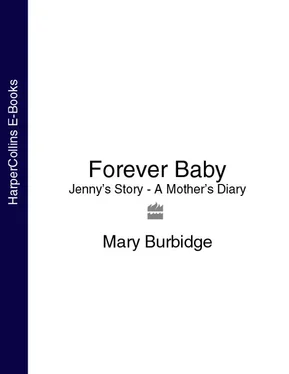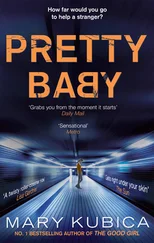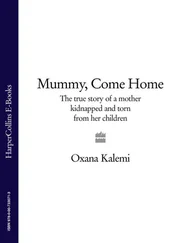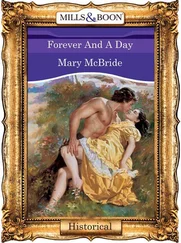JENNY’S STORY - A MOTHER’S DIARY

Certain details in this story, including names, places and dates, have been changed to protect the family’s privacy.
HarperCollinsPublishers
77-85 Fulham Palace Road,
Hammersmith, London W6 8JB
www.harpercollins.co.uk
First published by Pan Macmillan Australia 1997
© Mary Burbidge 1997, 2001, 2013
A catalogue record of this book is available from the British Library
While every effort has been made to trace the owners of copyright material reproduced herein and secure permissions, the publishers would like to apologise for any omissions and will be pleased to incorporate missing acknowledgements in any future edition of this book.
Mary Burbidge asserts the moral right to be identified as the author of this work
All rights reserved under International and Pan-American Copyright Conventions. By payment of the required fees, you have been granted the nonexclusive, non-transferable right to access and read the text of this e-book on screen. No part of this text may be reproduced, transmitted, downloaded, decompiled, reverse engineered, or stored in or introduced into any information storage retrieval system, in any form or by any means, whether electronic or mechanical, now known or hereinafter invented, without the express written permission of HarperCollins e-books.
HarperCollinsPublishers has made every reasonable effort to ensure that any picture content and written content in this ebook has been included or removed in accordance with the contractual and technological constraints in operation at the time of publication
Ebook Edition © NOVEMBER 2014 ISBN: 9780007549115
Version: 2014-11-19
Cover
Title Page
Copyright
Author’s Notes
Introductions
Part One – Looking back to ‘before’ (1990 – 1995)
Photographs – The way we were (1974 – 1995)
Part Two – Volume Twenty-four (March to May 1995)
Chapter 1
Chapter 2
Chapter 3
Chapter 4
Chapter 5
Chapter 6
Chapter 7
Chapter 8
Chapter 9
Chapter 10
Chapter 11
Chapter 12
Chapter 13
Chapter 14
Chapter 15
Chapter 16
Chapter 17
Chapter 18
Chapter 19
Chapter 20
Chapter 21
Chapter 22
Chapter 23
Chapter 24
Chapter 25
Chapter 26
Chapter 27
Chapter 28
Chapter 29
Chapter 30
Chapter 31
Chapter 32
Chapter 33
Chapter 34
Chapter 35
Chapter 36
Chapter 37
Chapter 38
Chapter 39
Chapter 40
Chapter 41
Chapter 42
Chapter 43
Chapter 44
Chapter 45
Chapter 46
Chapter 47
Chapter 48
Chapter 49
Chapter 50
Chapter 51
Chapter 52
Chapter 53
Chapter 54
Chapter 55
Chapter 56
Chapter 57
Chapter 58
Chapter 59
End note
Names, Organisations and Acronyms
Photographs – The way we are
Acknowledgements
About the Author
About the Publisher
On Truth and Diary Writing
It might be assumed that what is written in a diary is true. What would be the point of recording an untrue account of the day’s events? (Unless of course you were a Machiavellian type with nefarious motives.) So yes, my diary is a true record of my day, each day, as it happened.
The truth. But not the whole truth; I’d be up all night if I set out to record everything that happened each day. A diary is a selective account - a moment can expand to pages when everything it meant is written down; long hours can be dismissed in a word, or less.
The truth. But not nothing but the truth. There’s what happened; and then there’s all the rest - how I felt about it, what I think it means, or could mean, for me, for others. Interpretation, elaboration, speculation, recrimination, extrapolation and commentary all embellish the event.
This is a true story, written day by day in my diary, volume twenty-one of thirty-seven (so far), but it is my truth, coloured by my perceptions of what was important for me to record, at that time, on that day. How I saw something then is not necessarily how it would appear to another observer, or how it would appear to me at another time. It is the truth of that moment.
A reader might expect that speech in quotation marks is a direct quote of what was said, a faithful recording of the speaker’s words. Not at all. If I record an exchange as direct speech, it is because I choose to write it in that style. But what I set down is my perception and recollection of the gist of what was said, a paraphrasing of what I understood the message to be. It can be no more. I do not carry a tape recorder. And I may well have misunderstood.
I labour this point because, in letting my diary become a book, I have exposed not only myself, and my family, but many other people. This book is full of people, real people, the people who move in and out of our lives every day, as major or minor characters, guest stars or walk-on extras, in the play in which we take the lead role. And these people might feel I have misrepresented them, might say it was not like that, they didn’t say that, or mean that. They might feel shocked or hurt by how I felt about them. I want people to understand and accept, that their perception of what was really happening, their truth, is valid, as mine is valid. There are many truths in every moment.
Things have been changed; some things had to change. Some names, some places. Some people did not want their story told in my story, and sometimes I decided it would be better to leave things out, things that were unnecessary and could have been hurtful. But nothing has been added. It is impossible to recapture a moment from the past, uninfluenced by what has happened since, and a diary entry has no knowledge of the future. I want, as far as is possible, for this book to be a reproduction of my diary as I wrote it, not knowing each day what the next would bring. In being true to this, I feel I can be true to Jenny.
Names
There are many names in this book, real names or false names of real people, real places and real organizations. Some readers will know and recognize some of the people and places, whether the names have been changed or not, but for most readers this is a story, like any other, of characters interacting, and this is all that matters. The names are simply the names of characters in a story.
Because this is a true story, and part of a much longer true story, there are no neat beginnings or endings. Characters are not introduced for a purpose, then neatly tidied away. They are there because they were there, doing what they did on that day. They may or may not return. Their names may not matter. This is very messy and can be confusing. My advice to readers is that they just read on without bothering too much about sorting out who is whom. The people who were important in this story keep appearing and you will get to know them. All the others are “part of life’s rich pageant”.
However, some people have been in the story for years before this part began and deserve introduction as continuing core characters. They are listed at the end of the book, along with organisations and acronyms.
Читать дальше













